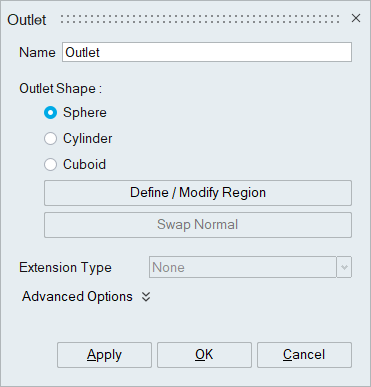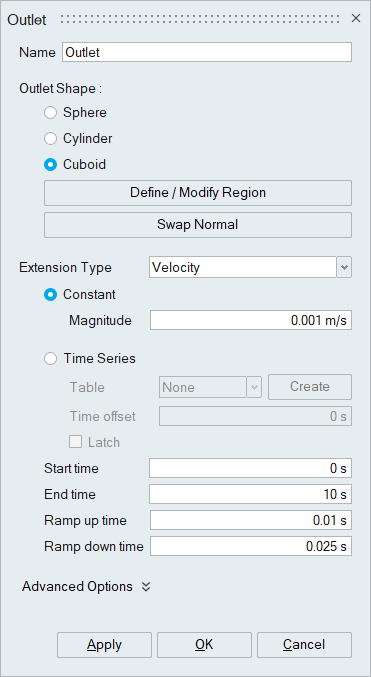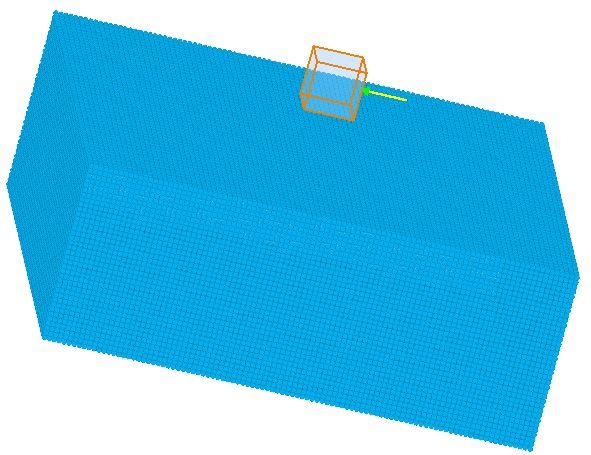Outlet
![]()
Introduction
Outlet regions mimic the behavior of outlet and simple outlet using a combination of removal and extended regions. They allow particles of any phase to be removed from anywhere within the computational domain. Every particle that enters an outlet region will be removed from the simulation permanently.

Outlet Regions Types
Currently there are 3 types of outlet regions:
- OUTREG_SPHERE
- OUTREG_CYLINDER
- OUTREG_CUBOID
Cylindrical and rectangular shaped outlet regions can optionally have an extension region, similar to inlet region extensions, which can define either velocity or acceleration within its volume. An extension is an extended region in the opposite direction of the outlet region's normal where a constant particle velocity or acceleration in the normal direction is enforced.
Spherical outlet region cannot have an extension and acts as a simple particle sink.
Description
When used without extensions, outlet regions act as pseudo zero pressure and zero stress boundaries with no backflow. Although it must be noted that since the particles are missing neighbors (incomplete support), these conditions are not strictly met, hence pseudo. In a way, this is the same behavior as the one observed for a free surface (void interface).
When used with an extension and provided that the extension is well populated, the behavior depends on the type of extension:
- Velocity
When using velocity extension type, the extension sets the normal component of particle velocity to the specified value. The particle velocity is free to evolve in directions perpendicular to the outlet region’s normal. The particles immediately outside of the extension will see this as some form of constant velocity outlet boundary. This is a somewhat loose form of boundary condition and the velocity felt by the particles immediately outside of the extension is not exactly equal to the outlet region velocity. The pressure immediately outside the extension will adjust itself to support the flow through the extension. It is worth mentioning that applying zero velocity in velocity type extension will result in a clogged outlet region.
- Acceleration
When using acceleration extension type, the extension sets the normal component of particle acceleration to the specified value. The particle acceleration is free to evolve in directions perpendicular to the outlet region’s normal. For particles immediately outside of the extension, the particles in the extension represent a form of outlet boundary with constant acceleration. The pressure immediately outside the extension will adjust itself to support the flow through the extension.

